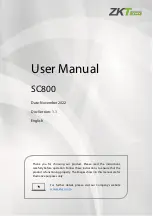
69/118
Siemens Building Technologies
Basic Documentation RVL471
CE1P2524E
HVAC Products
18 Function block "D.h.w. priority and flow temperature setpoint"
23.10.2002
18 Function block "D.h.w. priority and
flow temperature setpoint"
On this function block, the kind of d.h.w. priority (absolute, shifting, or parallel) and the
generation of the common flow temperature setpoint (maximum selection, d.h.w.) are
set.
18.1 Operating line
Line
Function, parameter
Unit
Factory
setting
Range
124
D.h.w. priority, flow temperature setpoint
0
0...4
18.2 Settings
Operating line 124
D.h.w. priority
Flow temperature set-
point according to
0
Absolute
D.h.w.
1
Shifting
D.h.w.
2
Shifting
Maximum selection
3
None (parallel)
D.h.w.
4
None (parallel)
Maximum selection
18.3 D.h.w. priority
Depending on the capacity of the heat source, it may be practical to reduce the amount
of heat drawn by the heating circuit(s) during d.h.w. heating, thus ensuring that the
required d.h.w. temperature will be reached more quickly. This means that d.h.w. heat-
ing is given priority over space heating.
For this purpose, the controller offers 3 types of d.h.w. priority:
•
Absolute
priority
•
Shifting
priority
•
No priority (parallel operation)
In the case of plants using a diverting valve (plant types x–3), absolute priority is always
present. In that case, selection of the kind of priority has no impact.
The priority is provided by delivering locking signals. The effect of the locking signals is
described in section “25.4.7 Gain of locking signal" erklärt.
18.3.1 Absolute
priority
During d.h.w. heating, the heating circuits are locked, that is, they receive no heat.
•
Controller with no bus connection:
During d.h.w. heating, the controller sends an uncritical locking signal of 100 % to its
own heating circuit
•
Controller with bus connection:
During d.h.w. heating, the controller signals the "Consumer master" that it presently
provides d.h.w. charging with absolute priority. The consumer master is the unit with
the same segment number as the controller with device number 1. The consumer
master then sends an uncritical locking signal of 100 % to all controllers in the same
segment. If the consumer master is in segment 0, the uncritical locking signal will be
delivered to all controllers in all segments.
















































